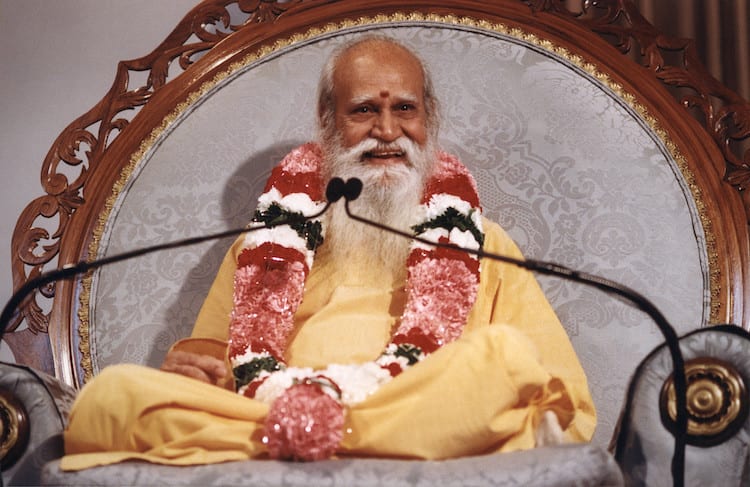Ecumenism is Integral Yoga. Though we follow one teacher, we learn to respect all other teachers. The teachings may vary, but the central teaching is always the same—to know our True Self. That is the first and foremost goal. Once we know the Self, then it is easy to know all other things.Until we “know” our Self, all our knowing will be a big “no.” Because we try to know everything through our conditioned minds, all our knowing will be conditioned, prejudiced, limited, and colored. Real knowing is only with the pure, neutral, and unconditioned mind. We should have that clear and uncolored vision, and that is the purpose underlying all these practices— to remove all the coloring. The mind should be freed from all these limitations and preconditioned ideas.
We literally should wash the brain. Wash it clean of all colors and conditions. Don’t merely switch from one prejudice to another; simply see clearly for yourself. That is the purpose behind all the teachings— whether they originated from Moses, Jesus, Buddha, Mohammed, Shankara, Krishna, Rama, or Siva—to keep the mind clean. With all that, even though all the religions teach essentially the same message, we still can appreciate the differences— just as we would want a good garden to have a variety of flowers. If you have only chrysanthemums for acres and acres, you wouldn’t even call it a garden; you would call it a farm. Even if the garden is small and doesn’t have that many flowers, if it has a variety, you call it beautiful See the difference? If you have only one kind of flower, it’s no longer a garden.
The purpose of ecumenism is not to have only one religion. When things become uniform, we become bored and don’t appreciate life anymore. But, while enjoying the variety, we can try to understand the unity. However, if you don’t know the unity, you won’t enjoy the variety. Instead, you will always be fighting. The true purpose of ecumenism is to stop the fighting. Those who have directly experienced the Truth say that it cannot be perceived by the mind or expressed by speech. Still, we depend upon the mind for understanding—despite the fact that even the most subtle phenomena which the mind can perceive are very gross when compared to the basic essence. So, when the mind attempts to understand the un-understandable essence, it has to limit the unlimited. The most subtle expression which the mind can perceive is the Sound. The Vedas call it the Nadam, and the Bible calls it the Word. Even this basic sound cannot be directly known, but you can see it expressed as the Light. The very sound itself creates the conditions for the illumination, or the Light. This is called the bindu, which is just a speck of light. As light it can be seen, but in the level beyond the light it cannot. It is heard, but what we hear through the physical ear is not even the beginning sound. The Sound, which we are talking about, is much more subtle than what we hear.
The way to understand and realize this is to use the help of some outside symbol. That is the reason why we have all the various temples, symbols, images, services, wavings of light and incense, and ringing of bells. Those are all outside symbols, which should ultimately help us to feel, see, and hear the same within. The individual is free to choose whatever symbol or image he prefers. By choosing the Light, we are using a universal symbol. The Light is universal, and our way is universal. We believe in the various signs, symbols, and approaches. Eventually, they all bring the Light. You are in Light, and you are called “enlightened.”



